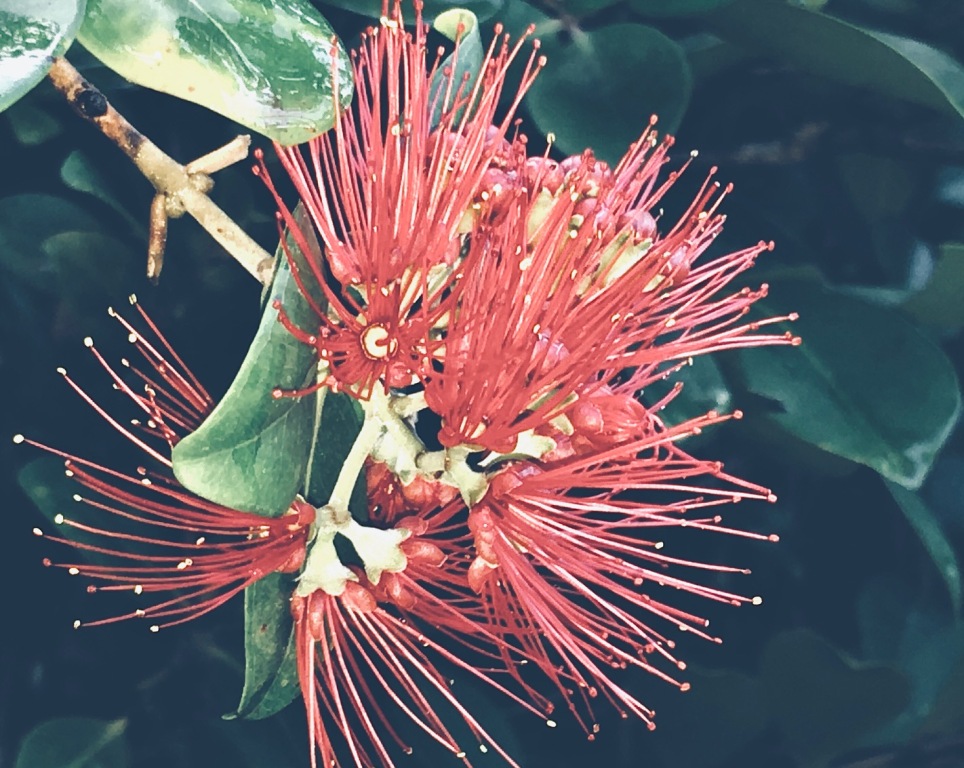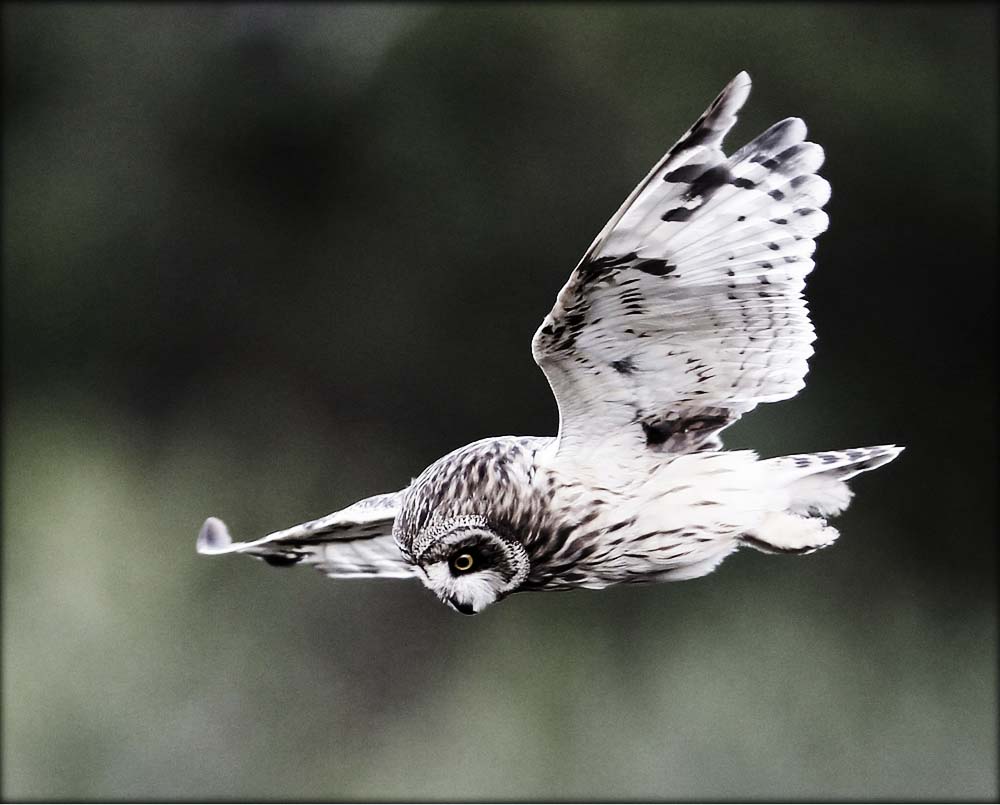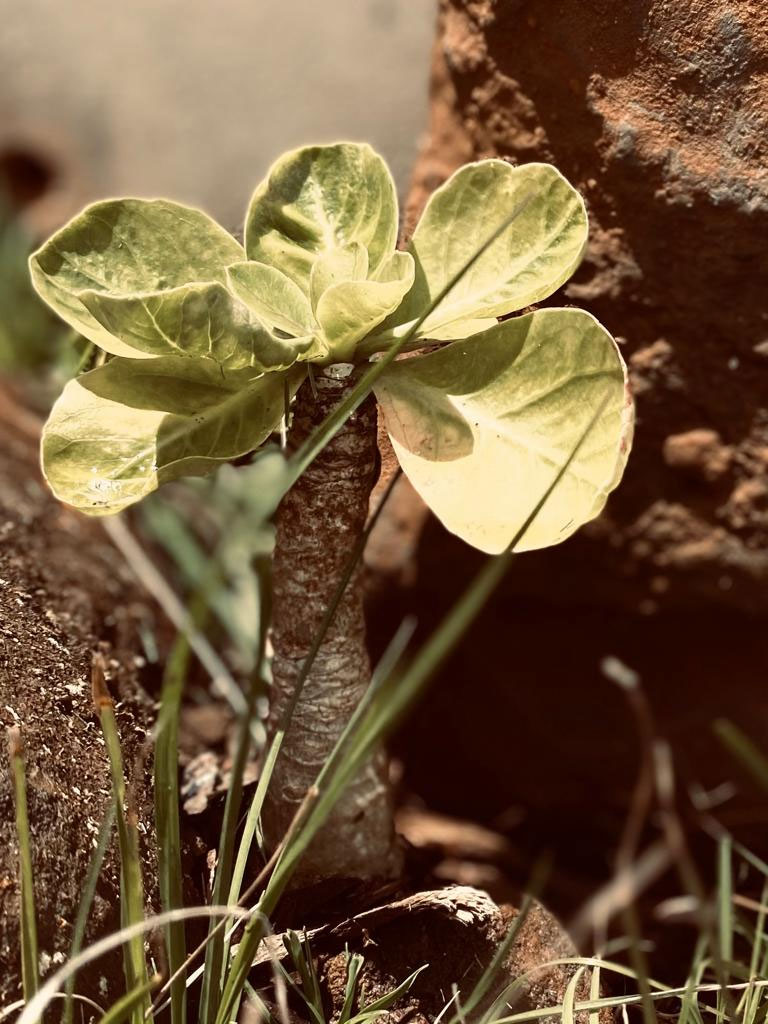BEAUTY OF IMPERFECTION: WABI-SABI UPCOUNTRY KALAHEO
Wabi-sabi (侘寂) is a philosophy of aesthetics the transience and ageing gracefully, without enhancement. It explores how nature can influence and enhance manmade objects and landscapes. Our wabi-sabi gardens allow nature to ‘do it’s thing’, even if that includes a few weeds here and there!
Restoring native plant habitat is vital to preserving biodiversity and we try to do our part here at O` Luina. We cultivate native plant species we found in here surrounding the pastures almost 20 years ago and try to repopulate some common natives as well as endangered endemic plants.Among abundand flora anf fauna that surrounds us here, it is a true pleasure to see our many ʻŌhiʻa trees thriving, abundance of native ferns, loulus (palms), pinao (dragon fly) hovering over glossy pool surface, pueo (native owl) hunting down the pasture at dusk.

Pritchardia Loulu Pritchardia Loulu
The genus Pritchardia Loulu consists of 25 species of palms native to the tropical Pacific Islands.
There are as many as 19 endemic species of Pritchardia in the Hawaiian islands including species categorized as either endangered, rare or vulnerable. Each Hawaiian island has at least one distinct Pritchardia species with some islands having distinct species or forms restricted to individual valleys or mountains. The Hawaiian Pritchardia are generally medium to large sized palms growing from 25 to 60 feet tall. Pritchardia remota from Nihoa is one of the smaller of the Hawaiian species. Its slender trunk reaches heights of up to 20 feet and is topped by fewer than 40 green, waxy leaves.

Ōhiʻa Ōhiʻa
In Hawaiian mythology,Ōhiʻa and ʻLehua were two young lovers. The volcano goddess Pele fell in love with the handsome ʻŌhiʻa and approached him, but he turned down her advances. In a fit of jealousy, Pele transformed ʻŌhiʻa into a tree. Lehua was devastated by this transformation and out of pity the other gods turned her into a flower and placed her upon the ʻōhiʻa tree.[19] Other versions say that Pele felt remorseful but was unable to reverse the change, so she turned Lehua into a flower herself.[20] It is said that when a lehua flower is plucked from an ʻōhiʻa tree, the sky will fill with rain representing the separated lovers' tears.

Hawaiian Short-eared Owl, pueo Hawaiian Short-eared Owl, pueo
The pueo, or Hawaiian Short-eared Owl, is an endemic subspecies of the widespread Short-eared Owl (Asio flammeus; Family: Strigidae).
The pueo is thought to have colonized the Hawaiian Islands sometime after the arrival of Polynesians.
Unlike most owls, pueo are active during the day and are commonly seen hovering or soaring over open areas. Pueo tends to be more active during crepuscular periods likely associated with prey availability. Like short-eared owls in continental environments, those in Hawai‘i consume small mammals, in addition to small birds, and insects.
Little is known about the breeding biology of pueo, but nests have been found throughout the year. Males perform aerial displays and wing-clapping known as a sky dancing display to prospective females. Nests are constructed by females and are made of simple scrapes in the ground lined with grasses and feather down. Females also perform all incubating and brooding. Males feed females and defend nests. Chicks hatch asynchronously and are fed by female with food delivered by male. Young may fledge from nest on foot before they are able to fly and depend on their parents for approximately two months.

Peperomia sandwicensis Peperomia sandwicensis
'Ala'ala wai nui is a low-growing, succulent herb belonging to the pepper family. It is indigenous to all the main islands except KahoolaweIts flowers and sticky, tiny peppercorn-like seeds grow on erect prongs at the tips of its stems. There are 26 species native to Hawai‘i.

ʻŌlulu, Alula ʻŌlulu, Alula
Brighamia insignis, commonly known as ʻŌlulu or Alula in Hawaiian, or colloquially as the vulcan palm or cabbage on a stick, is a endangered species of Hawaiian lobelioid in the bellflower family, Campanulaceae. It is native to the islands of Kauaʻi and Niʻihau. Alula, Brighamia insignis, is a critically endangered flower species that has come close to extinction. We are hapilly growing three healthy Alulas among volcanic boulders by the East corner of the pool.
